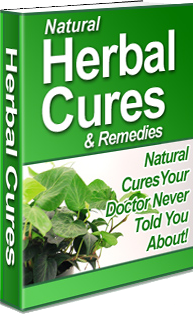Children’s ADHD Prescriptions Increase Nine-fold, Ages Three and Up
The UK, like the U.S., is concerned by a baffling increase in heavy prescription drugs like Ritalin and psychotropics apparently given to children diagnosed with ADHD* as young as three – although guidelines condemn its use for children under age six.
Medical pundits called for a significant decrease and are noticing that parents are pressuring doctors for the meds to increase their children’s performance. The same exact issue happens in the U.S. with doctors groups standing up against the trend. Their fear is that Ritalin is prescribed out of expediency and convenience in lieu of more expensive, time-taking options like counseling (and overall health).
Recently, child psychologists gathered at a summit in Manchester to discuss the rising “medicalization of childhood.” Ritalin – methylphenidate hydrochloride – is considered safe by allopathic standards and time-tested, but is a serious drug with the ability to cause nausea, mood swings, fatigue, insomnia, loss of appetite, heart problems, heart attacks and is linked to suicide. It is considered comparably safe to hardcore self-medicating like alcohol (think: quick dopamine shot), cocaine, and Speed. But for kids?? Three-year-olds??
[do_widget id=text-16]
The education and child psychology department of the British Psychological Society pointed out a nine-fold increase ADHD prescriptions for children. According to the NHS, in 1997, there were around 92,000 prescriptions. Compare that to nearly 800,000 prescriptions last year! This is only in the UK – the U.S. is a different story. Over here, sales of ADHD stimulants more than doubled between 2007 and 2012, from $4 billion to $9 billion. England’s and Wales’ own guidelines recommend a “comprehensive” program to help struggling children such as counseling and educational tools, among others.
Vivian Hill, chairperson of the BPS, finds that a comprehensive program does not always come into play.
Budgets have been cut and psychiatrists feel they can’t follow the official guidelines, which recommend therapy before drugs.
Often, the first response now is to issue drugs, not offer therapeutic help.
She estimated that hundreds of children under age six are given ADHD drugs, and that the drugs are of no use absent other support. A study last year by the Association of Educational Psychologists backed Hill’s claim. The study found that more than one hundred children under age six were in fact prescribed drugs like Ritalin, in just one locale, and affirmed the trend was more than regional.
A spokesperson from the National Institute for Health and Care Excellence believes that drugs have a small role compared to psychotherapy for ADHD management.
He said:
These drugs are not recommended as first-line treatments for young people with mild or moderate ADHD. They are recommended as first-line therapy for school-age children and young people with severe ADHD.
 A Cambridge professor echoed the thought believing that most cases weren’t severe enough for drugs and that therapeutic tools could suffice, saying:
A Cambridge professor echoed the thought believing that most cases weren’t severe enough for drugs and that therapeutic tools could suffice, saying:
But the parents are quite keen they should have a drug. Parents know these drugs are cognitive enhancing, so I guess they’re trying to get an advantage for the child.
On a personal note, I observe that it is much more difficult for adults to obtain ADHD drugs than children, with the exception of the increase of middle-aged women on ADHD meds. Working at a school, one of my jobs was to dole out this medication, and it filled me with dread. They were on the highest dosage, 20mg, and some took it multiple times. Out of desperation and haste for my own struggles, I sought help for ADHD and was treated like an addict.
I’ve lost jobs for the way that I think and function and thought there was “something wrong with me.” I didn’t know in my early 20s that there really wasn’t anything inherently wrong (maybe a wrong job fit) and that nutrition and homeopathy are just a couple ways to excel. After getting diagnosed three times with ADHD, all the psychiatrists and doctors wanted was for me to go to anti-depressants, without even taking time to study the issues. I thought that would be disastrous.
When I finally proved that I needed it and was healthy enough to take it, the initial results on the lowest dosage, 5mg, were astounding (like in the movie Limitless) – but just like that movie, they didn’t last and there was a price to pay. An increase in just 5mg once more during the day helped a bit but led to serious heart issues, sometimes pain and numbness. I lost the desire to eat and the ability to sleep even after quitting them. So it is baffling that 20mg can be given to little children – and it shouldn’t surprise anyone that every year, some of them die from heart attacks.
Drugs like Ritalin take up dopamine receptor sites that then weaken the brain’s ability to produce dopamine on its own. Thus, crippling dependency and continued “self-medicating.” It creates a debt in the body that is difficult to overcome. Even though the man who first labeled ADHD later said it was fake, does not make the symptoms any less real to those who struggle with what feels like an insurmountable burden. There are a variety of promising and even inexpensive ways to approach ADHD-like symptomology that add to one’s life if one takes some time to look.
*ADHD: Attention Deficit Hyperactivity Disorder. Note: recently both types, non-attentive and hyperactive were rolled into one acronym, ADHD. General modern consensus finds that it is not a deficit of attention, but more so an inability to concentrate among other keynotes.
Image: Wikimedia Commons
Heather Callaghan is a natural health blogger and food freedom activist. You can see her work at NaturalBlaze.com and ActivistPost.com. Like at Facebook.



